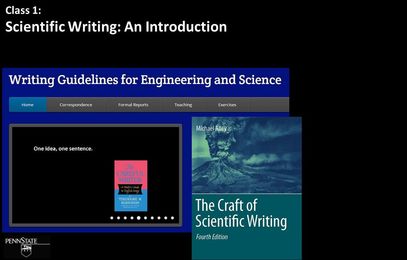What Distinguishes This CourseThis page presents a model writing course to prepare engineering and science students to write as professionals through their career. To that end, the course has the students write and revise three important types of documents: email, proposal, and final report. Perhaps what most distinguishes the course is that the content for the proposal and final report arises from a design course that occurs during the same semester as the writing course. For that reason, the students not only have an authentic audience and purpose but also can achieve significant technical depth. Second, because the writing is reviewed both by instructors in the design course and by mentors in the writing course, the students receive feedback both on the content and on the style and form of the writing. Third, students critique drafts in sessions that follow the Iowa Writers' Workshop model, in which the students submits the draft in advance and then receive feedback from a round table consisting of a mentor and peer critiquers. Serving as mentors for those workshops are mechanical engineering seniors who have excelled both in the design course and in the writing course. Finally, the course teaches students the essence of grammar, punctuation, and usage that engineers and scientists need to maintain credibility and to adopt sophisticated strategies for connecting their ideas.
The main course outcomes are as follows:
Other specific course outcomes are as follows:
Course Contents |
Assignments, Templates, and ExamplesIn this course, the students have three major writing assignments, of which the last two arise from the major project of an accompanying design course.
Job Application Email: Write an email to secure an entry-level job, internship, or research position. To allow us to make edits, use the provided email template in Microsoft Word. To this email, attach a resume. Given below is an email template and email model. For privacy reasons, the resumes are not included with the model emails. Proposal: Write a proposal for the design concept that your design team will prototype. Follow the proposal guidelines given in the template below. This proposal will also be submitted for a content grade in the design course and a style and form grade in the writing course.
Final Report: Write a report that documents your team’s final design. Follow the report guidelines given in the template. This report will also be submitted for a content grade in the design course.
Exercises on Style. Given below are exercises on style that are incorporated during the semester.
Teaching Slides |


